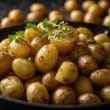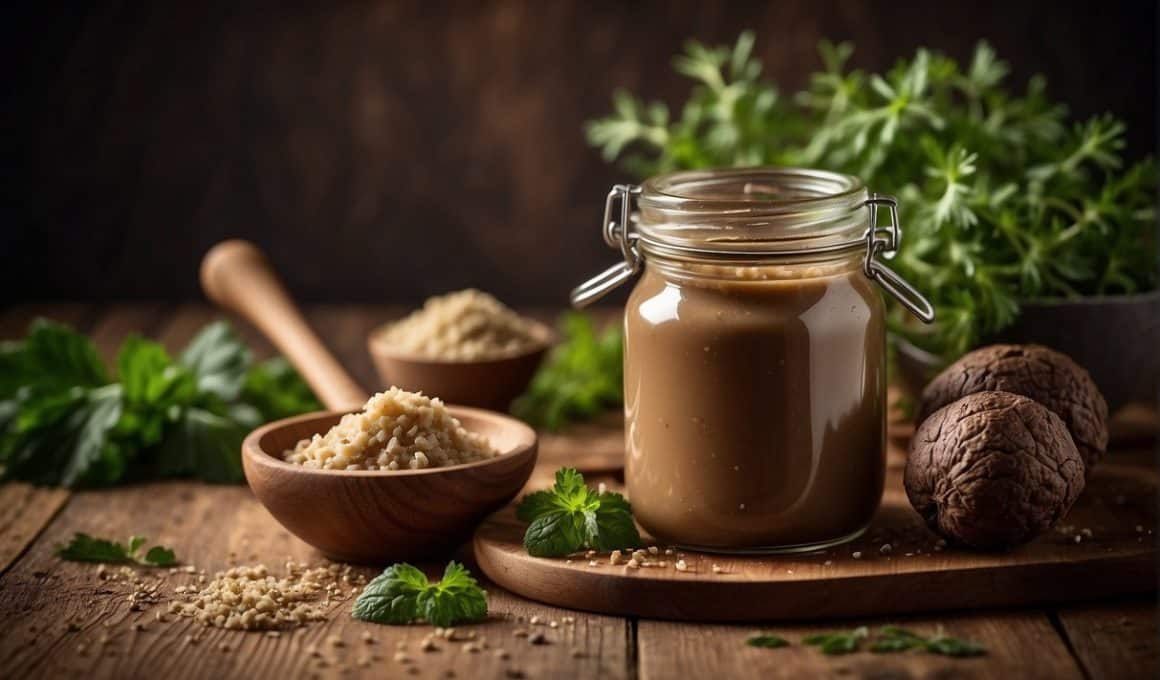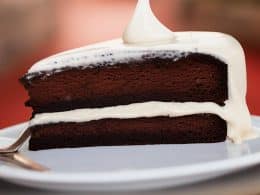Truffle sauce is a luxurious and flavorful addition to a variety of dishes, elevating the taste experience with its unique and earthy aroma. Made from a base that often includes truffles, heavy cream, and a blend of other flavorful components such as cheese and butter, truffle sauce can greatly enhance pasta, meats, and even simple appetizers like bread. The preparation of truffle sauce is as important as the ingredients, with techniques that ensure the delicate flavors are perfectly balanced and the texture is divine.
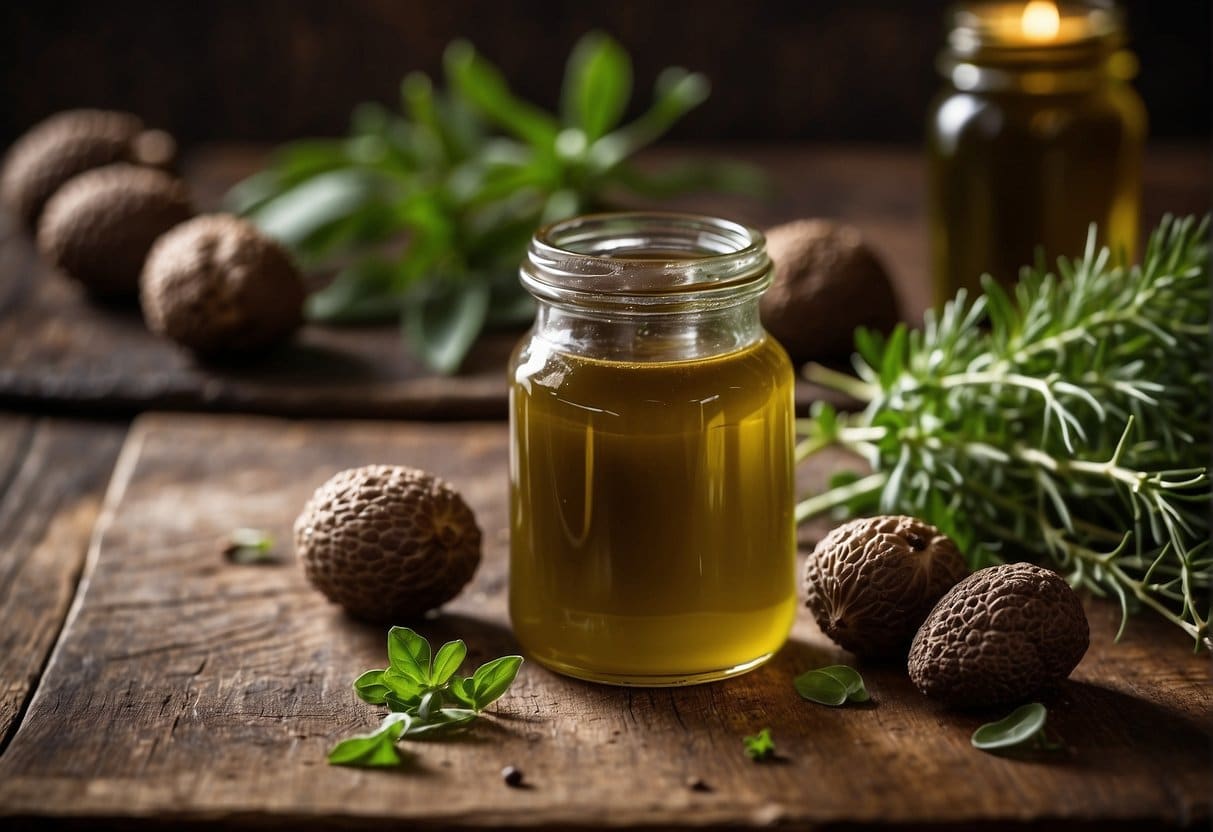
Understanding the intricacies of truffle sauce goes beyond its indulgent taste. The sauce’s nutritional profile varies based on the ingredients used, and there are methods for storing and preserving it to maintain its quality. When serving, pairing it with the right dish is crucial to making the most of its distinct flavor. While culinary enthusiasts might have questions about making the perfect truffle sauce, following some basic cooking tips and practicing presentation techniques can help create a dish that’s both appealing to the eye and the palate.
Key Takeaways
- Truffle sauce adds a luxurious flavor to various dishes with a creamy texture and earthy tones.
- It’s important to balance the ingredients and preparation methods when making truffle sauce.
- Proper storage and pairing with appropriate dishes enhance the overall dining experience with truffle sauce.
Truffle Sauce Overview
In this section, I’ll provide you with a succinct glimpse into the rich history of truffle sauce, discuss the main types of truffles used in its creation, and describe the distinctive characteristics that make truffle sauce a luxurious addition to any dish.
Historical Background
Truffles have been esteemed since ancient times, and my research indicates that their use dates back to the Greeks and Romans. These civilizations recognized the value of truffles, an underground mushroom, for their unique taste and aroma. The rarity of truffles, combined with the difficulty in harvesting them, contributes to their status as a luxury ingredient. It is this exclusivity that led to the development of truffle sauce as a way to incorporate the taste of truffles into various dishes.
Types of Truffles
When discussing truffle sauce, it’s imperative to know about the types of truffles that could be its base. Here are the two most renowned:
- Black Truffles (Tuber melanosporum): Revered for their strong, earthy flavor, these are harvested mainly in winter.
- White Truffles (Tuber magnatum): More delicate and aromatic than black ones, they are often found in the Piedmont region of Italy and are typically more expensive.
Each type of truffle imparts a unique flavor profile to the sauce, making it a versatile ingredient in my culinary repertoire.
Characteristics of Truffle Sauce
Characterizing truffle sauce involves acknowledging its rich consistency and complex flavors. A typical truffle sauce is an amalgamation of finely chopped or pureed truffles, oil or butter, and often a creamy base such as heavy cream or cheese. This produces a rich sauce that can elevate even the simplest of dishes with its luxurious taste. The aroma of truffles is particularly volatile, so it’s best when truffle sauce is used fresh and added to dishes right before serving to capture its full essence. Truffle sauce is not just a flavor enhancer but also a statement of indulgence in fine cuisine.
Essential Ingredients
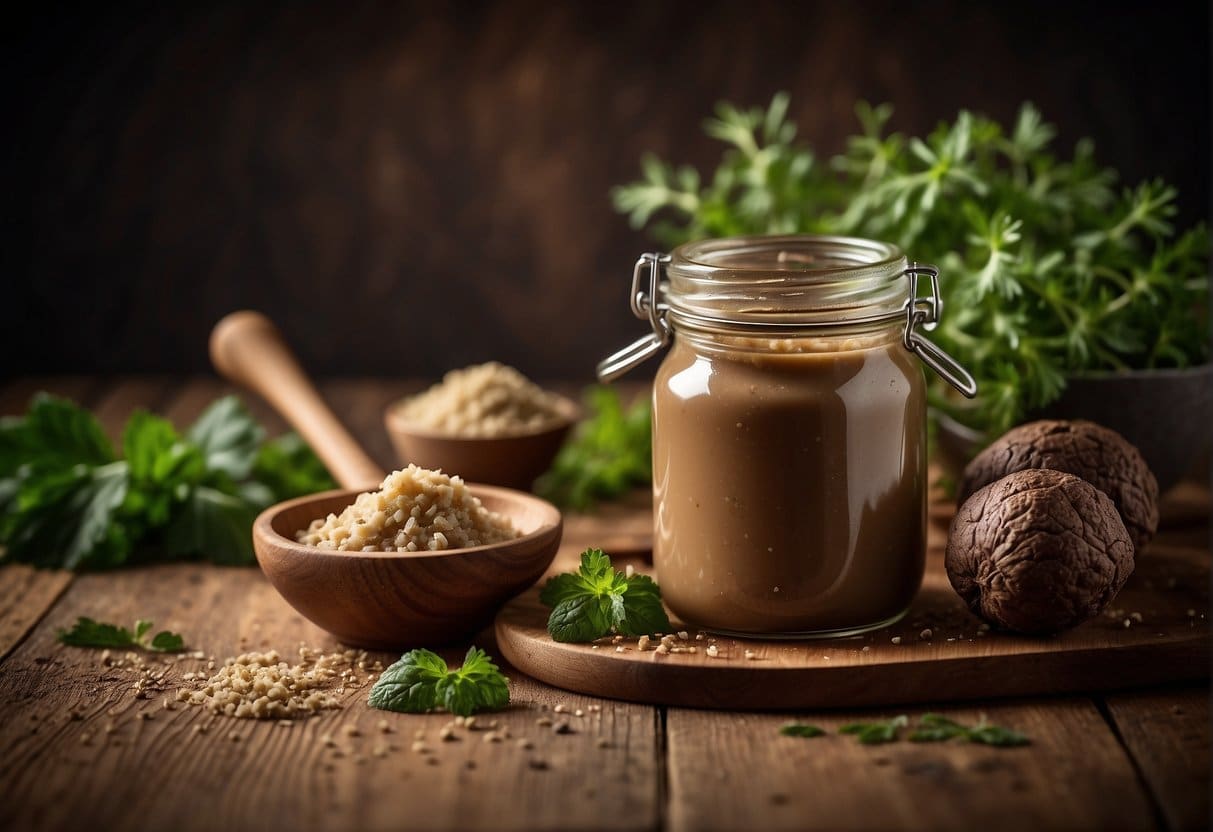
When I craft truffle sauce, the quality of ingredients is paramount. I focus on two key elements: the truffle varieties that provide the distinct flavor, and the base ingredients that form the foundation of the sauce.
Truffle Varieties
- Black Truffle: A prized ingredient in my truffle sauce is the black truffle. Its earthy and rich flavor is essential and often I use freshly grated or preserved truffles.
Base Ingredients
- Cream: Often, I choose heavy cream to create a smooth, rich texture in the sauce.
- Truffle Oil: A drizzle of high-quality truffle oil can enhance the sauce’s aroma and imbue it with a deeper truffle essence.
- Butter: For a luxurious silkiness, good quality butter is non-negotiable.
- Olive Oil: A staple in my kitchen, olive oil offers a fruity base that complements the truffle.
- Garlic: Just a hint of garlic adds necessary depth without overwhelming the truffles’ flavor.
- Cheese: Parmesan is my go-to cheese for its nuttiness and ability to meld seamlessly with the other ingredients.
Each ingredient must be chosen with care, as the caliber of the truffle sauce hinges upon the quality of its components.
Preparation Techniques
When I prepare truffle sauce, I focus on crafting a robust base, accurately incorporating truffles, and meticulously seasoning for a full-bodied flavor profile.
Making the Base
In my recipe, the foundation is pivotal. I start by gently sautéing finely minced garlic clove and shallot or onion in a saucepan. Their sizzle releases an earthy aroma, the precursor to a rich base. Once transparent, I deglaze with a splash of wine, then reduce the heat to let the flavors meld.
Incorporating Truffles
After the base layers settle, I incorporate truffles into the sauce. I ensure the sauce is off the boil before adding finely chopped truffle pieces to avoid losing the delicate truffle flavor. I typically use a fold technique with a wooden spoon, as this keeps the integrity of the truffle pieces intact.
Seasoning and Flavoring
Finally, for seasoning and flavoring, precision is key. A pinch of salt and a grind of black pepper are essential, but it’s the whispers of thyme or rosemary that complement the simple, earthy notes of the truffle. I whisk these ingredients into the mix, taste, and adjust. The method is straightforward, but my commitment to balance is what sets my truffle sauce apart.
Truffle Sauce Recipes
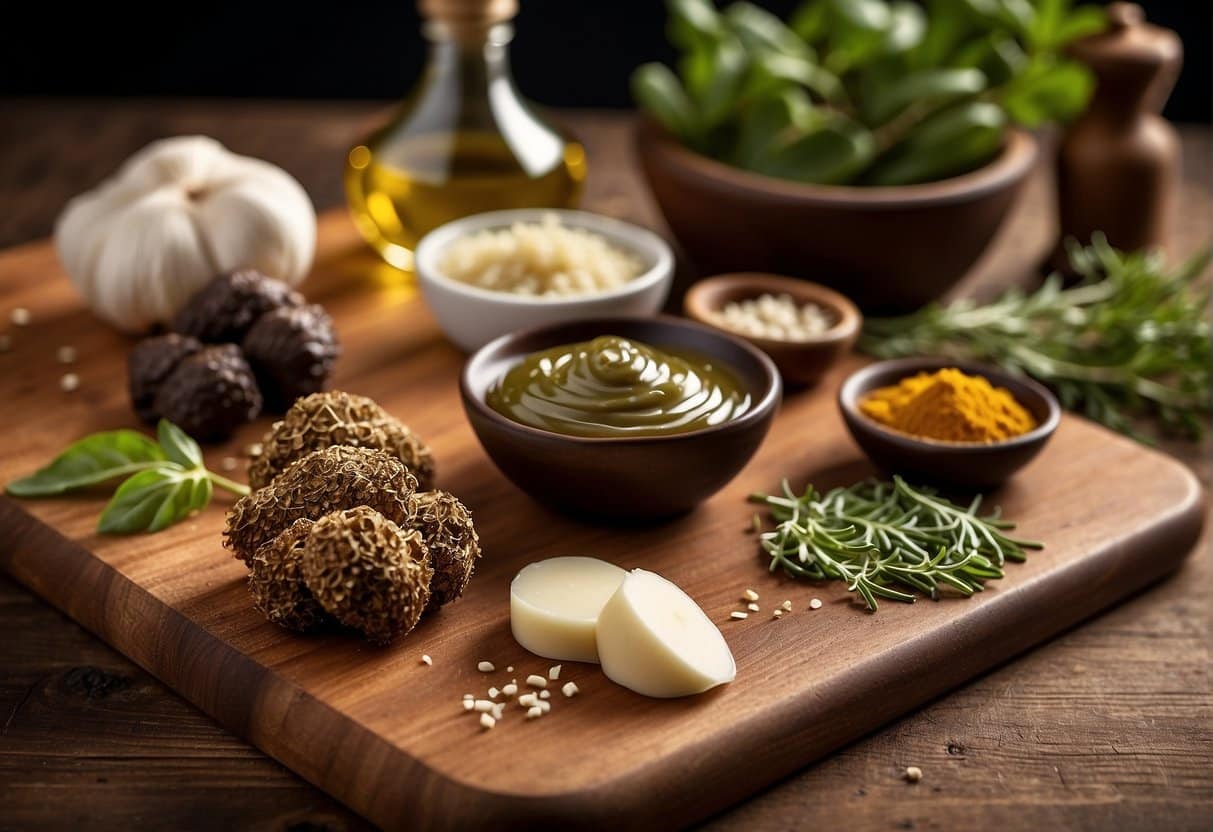
In crafting the perfect truffle sauce, choosing quality ingredients is key. My recipes leverage the distinct flavors of truffles, enhancing dishes from pasta to steak. Here’s how I make some of the best truffle sauce recipes.
Classic Truffle Cream Sauce
For a rich and decadent Classic Truffle Cream Sauce, I use heavy cream as the base. I bring the cream to a boil, then reduce the heat to simmer, incorporating truffle oil, grated Parmesan cheese, and butter for a velvety texture. I season the sauce with just a touch of salt and pepper, stirring until it’s smooth. This sauce pairs wonderfully with risotto or as a luxurious topping for steak.
- Ingredients:
- Heavy cream
- Truffle oil
- Parmesan cheese
- Butter
- Salt and pepper
Black Truffle Pasta Sauce
My Black Truffle Pasta Sauce begins with sautéed garlic to aromatic perfection in olive oil. A splash of white wine adds depth, while heavy cream brings creaminess. Once reduced, I fold in finely sliced black truffles, stirring gently. This sumptuous sauce is a match made in heaven with long strands of tagliatelle or linguine, but is equally divine with farfalle or penne.
- Ideal Pasta Pairings:
- Tagliatelle
- Linguine
- Farfalle
- Penne
Specialty Sauce Variations
I also enjoy experimenting with Specialty Sauce Variations for an inventive twist. I might mix chopped lobster into a truffle cream sauce for a seafood delight, or add minced chicken and mushrooms for a heartier version. When it comes to stuffed pasta like ravioli, I infuse the truffle sauce with herbs for an extra layer of flavor. Each variation serves to highlight the truffle’s earthy notes, transforming even a simple dish into gourmet fare.
- Variations:
- Lobster Truffle Cream Sauce
- Chicken Mushroom Truffle Sauce
- Herbed Truffle Sauce for Ravioli
Nutritional Information
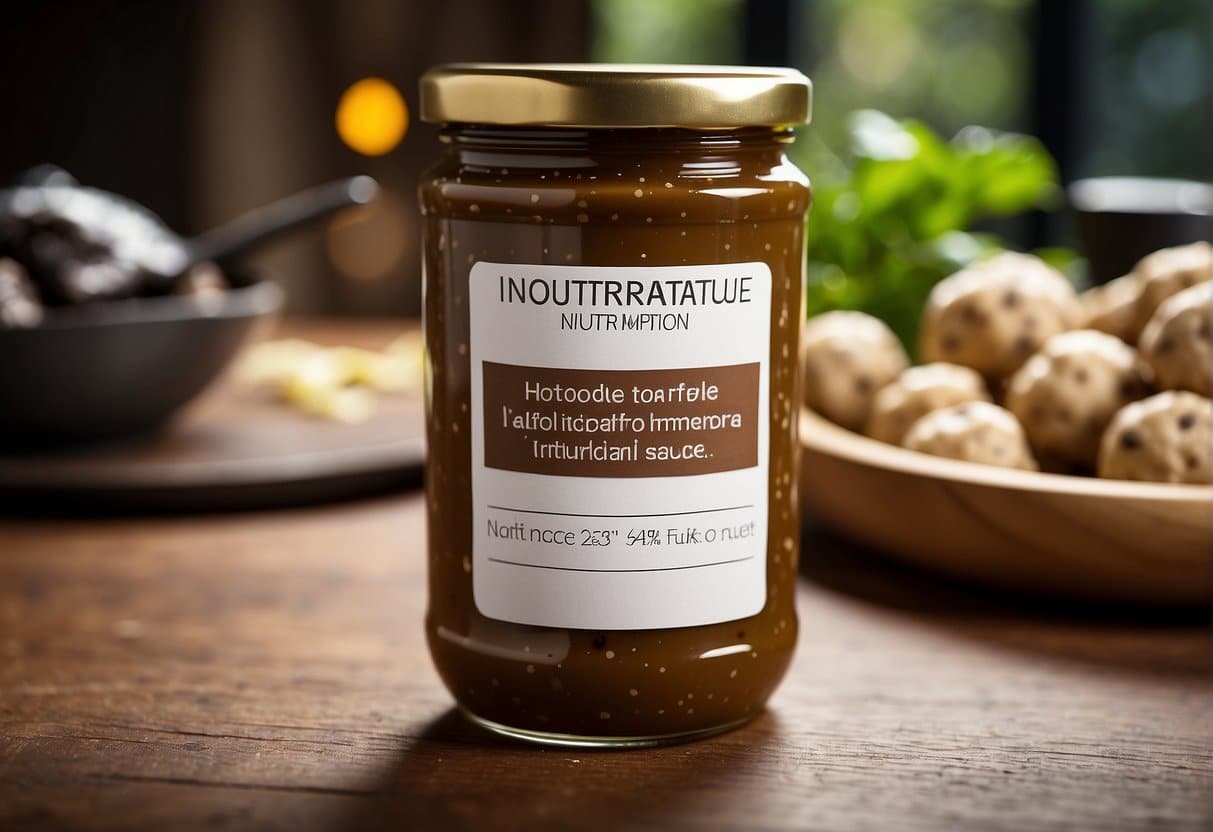
When I examine the nutritional information of truffle sauce, I focus on its impact on dietary intake and health-related aspects. The composition typically encompasses essential nutrients and varies depending on the brand or recipe. Below, I present a detailed breakdown in terms of caloric content and dietary considerations.
Caloric Content
Truffle sauce can vary in calories, but a typical serving size, like one from Urban Truffles, contains about 80 calories per ½ cup (56 g) serving.
- Calories: 80 per serving (1/2 cup, 56 g)
Dietary Considerations
Analyzing the nutritional label for dietary components is crucial. Here’s what I found for truffle sauce, referencing a nutritional profile similar to one from Urban Truffles:
- Total Fat: 7g (9% DV)
- Saturated Fat: 1g (5% DV)
- Cholesterol: 0mg (0% DV)
- Sodium: 280mg (12% DV)
- Total Carbohydrates: 2g (1% DV)
- Dietary Fiber: 1g (4% DV)
- Sugars: 1g
- Protein: 2g
- Vitamin C, Calcium, Iron, Potassium: Not significant sources in typical truffle sauce preparations. Percent Daily Values (% DV) are based on a 2,000 calorie diet.
Please note: The dietary facts above are general guidelines and can vary depending on the brand or recipe. Always check the label of a specific product for the most accurate information.
Culinary Pairings and Serving Suggestions

Truffle sauce is a versatile and luxurious addition to various dishes. I often recommend it to elevate the flavors of simple meals or to add a touch of elegance to more complex plates.
Meat and Poultry Pairings
For meat dishes, I find that truffle sauce pairs exceptionally well with red meats like beef, enhancing the rich, savory flavors. A classic combination is a filet mignon with a drizzle of truffle sauce, which brings out a symphony of earthy notes. Chicken, especially when grilled, also matches beautifully with truffle sauce. The subtle, woody undertones of truffle complement the natural flavors of the chicken without overwhelming it.
- Beef: Filet mignon, rib-eye
- Chicken: Grilled chicken breast, thyme-roasted drumsticks
Seafood Enhancements
When it comes to seafood, lighter is better. Scallops, with their delicate sweetness, are particularly suited to being paired with truffle sauce. The enhancement of taste without overpowering the seafood is key. I like to lightly drizzle truffle sauce over seared scallops, ensuring a balanced dish that is rich in flavor yet refined.
- Scallops: Seared, with a light truffle sauce drizzle
- Fish: Mild white fish, truffle sauce as a finishing touch
Vegetarian Alternatives
Moving onto vegetarian options, truffle sauce can transform even the simplest ingredients. Roasted cauliflower becomes a star dish with just a small spoonful of this delectable sauce. Beyond vegetables, truffle sauce can be a rich addition to a loaf of crusty bread, marrying the textures of crisp crust and soft crumb with the complex notes of the truffle.
- Cauliflower: Oven-roasted, paired with a light coating of truffle sauce
- Bread: Freshly baked, with truffle sauce for dipping
Storing and Preservation
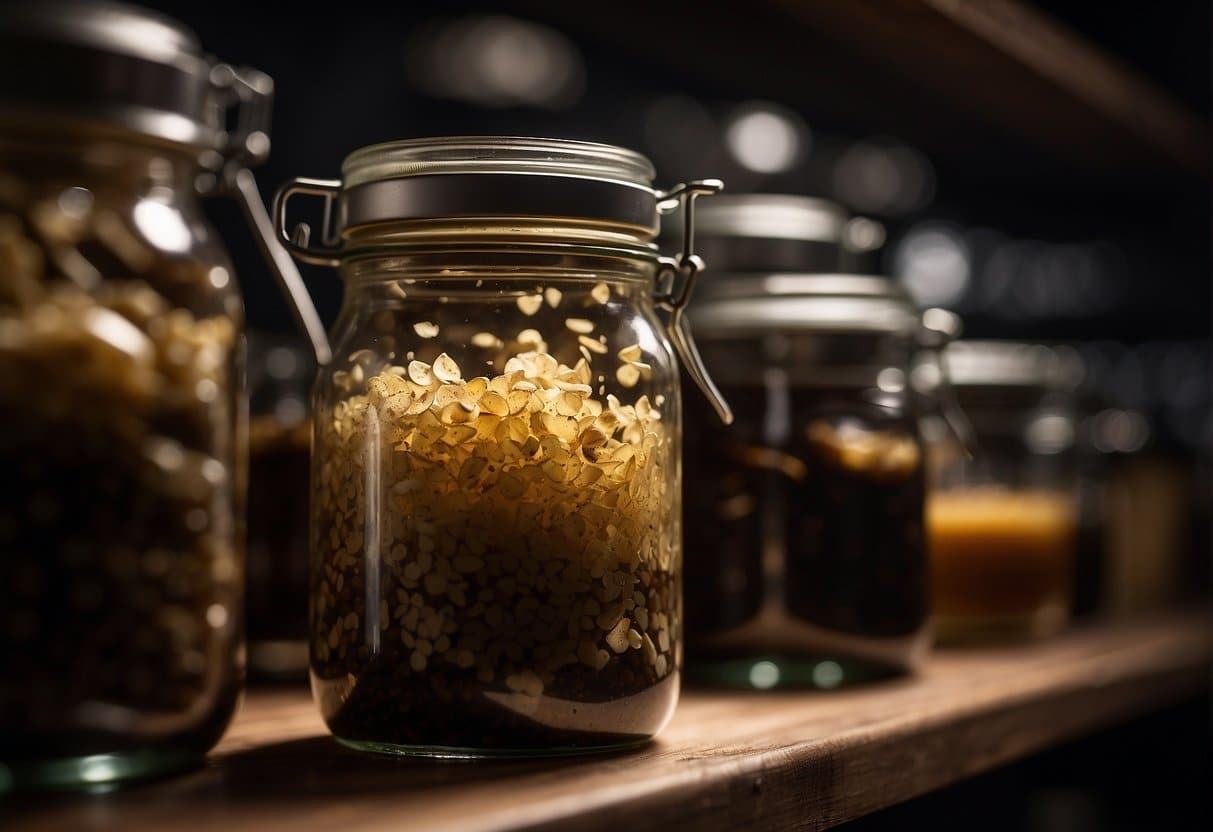
When it comes to truffle sauce, I know that maintaining its luxurious flavor and aroma is critical. Proper storage methods are essential to preserving the quality of this cherished condiment.
Short-Term Storage
For short-term storage, I always keep my truffle sauce in an airtight container. This is to ensure that the sauce retains its flavor and is protected from external odors which can be easily absorbed. I place the container in the refrigerator, where it can stay fresh. It’s important to keep truffle sauce cool, typically at or below 40 degrees Fahrenheit, to slow down the degradation of its flavors.
Freezing and Long-Term
When I need to store truffle sauce for a longer duration, freezing is a viable option. However, it should be noted that while freezing can extend the shelf life, it may slightly alter the texture or taste upon reheating. To freeze, I portion the sauce into useable amounts, then seal it tightly in freezer-safe containers or bags. This helps prevent freezer burn and flavor loss. When I’m ready to use the frozen truffle sauce, I thaw it in the fridge overnight and then reheat it gently to ensure the best quality.
Cooking Tips and Tricks
When preparing truffle sauce, the key is to achieve the right texture and flavor, while also knowing how to address any issues that may arise during the process. My insights here are designed to help you perfect your truffle sauce, ensuring it’s both delicious and consistent.
Sauce Consistency
To achieve the ideal texture for your truffle sauce, balance is crucial. I recommend starting with a basic roux and slowly whisking in heavy cream. The consistency should be smooth, not too thick or runny. If the sauce is too thin, continue cooking it over a low flame to reduce and thicken. Conversely, if it’s overly thick, gently stir in more cream until the desired texture is reached. Truffle oils or finely chopped truffles can be incorporated at the end to maintain their integrity.
Enhancing Flavor
The heart of truffle sauce lies in its luxurious truffle flavor. I always use high-quality truffle oil to introduce that signature aroma and earthy taste. Freshly minced garlic, shallots, or onions, sautéed until translucent, form a great base for building depth. Incorporate gentle seasonings; just a pinch of salt, a turn of black or white pepper, and herbs like chives or thyme can elevate the truffle essence. Finishing with a sprinkle of nutty Parmesan cheese melds beautifully with the truffle’s flavor profile.
Troubleshooting Common Issues
Sometimes issues crop up, and that’s okay. If your sauce breaks, forming a grainy texture, remove it from the heat immediately. Whisk in a few drops of cold cream to re-emulsify. Should the truffle taste be overpowering, I find that adding a little more cream or a pinch of salt can balance it out. And if the aroma isn’t as potent as you like, a small amount of truffle oil or finely chopped fresh truffle stirred in just before serving can make all the difference. Keep in mind that truffles are delicate; too much heat can dissipate their aroma and flavor, so add them late in the cooking process.
Presenting Truffle Sauce
Truffle sauce is a luxurious condiment that can transform ordinary dishes into restaurant-worthy creations. I’ll reveal how to garnish with truffle sauce and use it as a dipping sauce to elevate your culinary experience.
Garnishing Techniques
When it comes to truffle sauce, the art of garnishing should aim to enhance both the aesthetics and flavor profile of a dish. I often drizzle a small amount artistically over the top of plated pasta or risotto, allowing the sauce’s deep, earthy aroma to permeate the dish. For a visually appealing approach, I use a spoon to create delicate swirls or drops that subtly mix with the main ingredients, bringing complexity to every bite without overwhelming the palate.
Dipping Sauce
As a dipping sauce, truffle sauce offers a rich and indulgent experience. I serve it in a small, elegant bowl or ramekin alongside an array of serving suggestions like crispy potato wedges, artisan breads, or even crudité. The intensity of the sauce is a perfect match for the simplicity of the dippers, creating a complementary balance. Remember, the goal is to deliver a taste that encourages savoring, so I ensure the amount of sauce provided is just right to appreciate its unique flavor without exhausting the senses.
Frequently Asked Questions
In this section, I’ll address some of the common inquiries you might have about truffle sauce, covering everything from its core components to how it can elevate the simplest of dishes.
What are the key ingredients in making truffle sauce?
The main ingredients in a black truffle sauce include black truffles, known for their earthy and robust flavor, along with complementary components like olive oil, garlic, and salt to enhance the taste.
How can you incorporate truffle sauce into various recipes?
You can add truffle sauce to a myriad of dishes. For instance, blending it into risotto or mashed potatoes imparts a rich flavor depth, while drizzling over scrambled eggs can transform an ordinary breakfast into a gourmet experience.
What distinguishes TRUFF sauce from other truffle sauces?
TRUFF sauce is characterized by its unique infusion of truffle flavors with chili peppers, organic agave nectar, and an array of spices, creating a taste that’s not only indulgent but also has a signature spiciness that differentiates it from traditional truffle sauces.
What is the flavor profile of a typical truffle sauce?
A typical truffle sauce provides a pungent and earthy palette, marked by the unmistakable depth of truffles, balanced with savory undertones and sometimes accented with a hint of garlic or herbs.
Can you provide a step-by-step guide for preparing homemade truffle sauce?
To prepare homemade truffle sauce, start by finely chopping fresh truffles or rehydrating dried ones. Then, gently heat olive oil with minced garlic before adding in the truffles, allowing the mixture to simmer so the flavors fully meld. Season with salt, and your homemade truffle sauce is ready to adorn your favorite dishes.
In what ways can truffle sauce enhance the taste of common dishes like fries or pasta?
Truffle sauce provides a luxurious twist to fries, imparting an aromatic intensity that elevates them beyond traditional snacking fare. When it comes to pasta, incorporating truffle sauce can turn a simple plate of noodles into an enticing and flavorful main course, merging the earthiness of truffles with the comforting texture of pasta.


